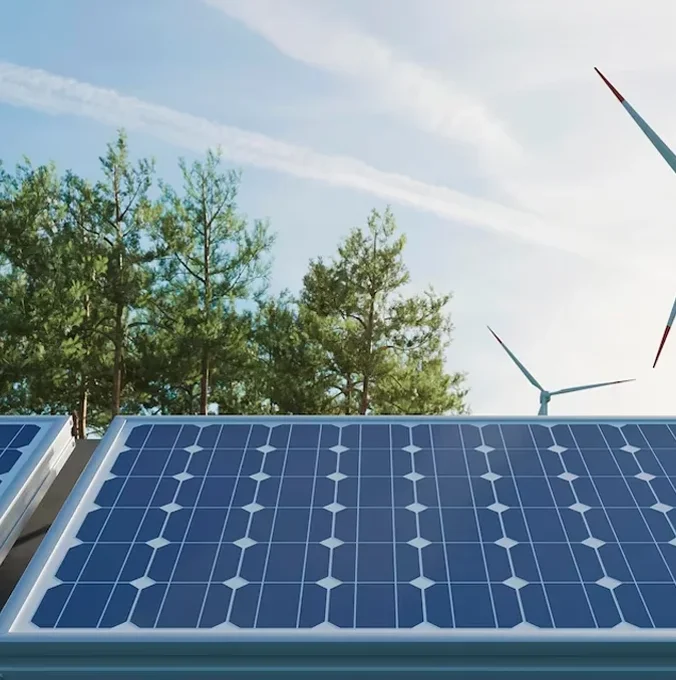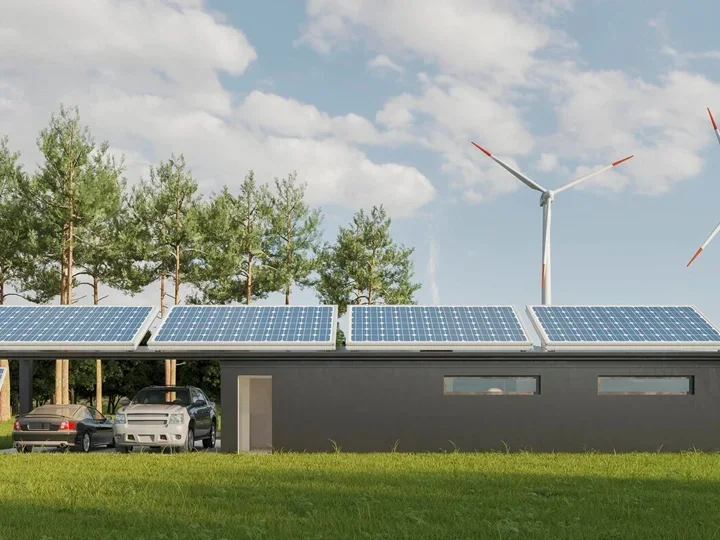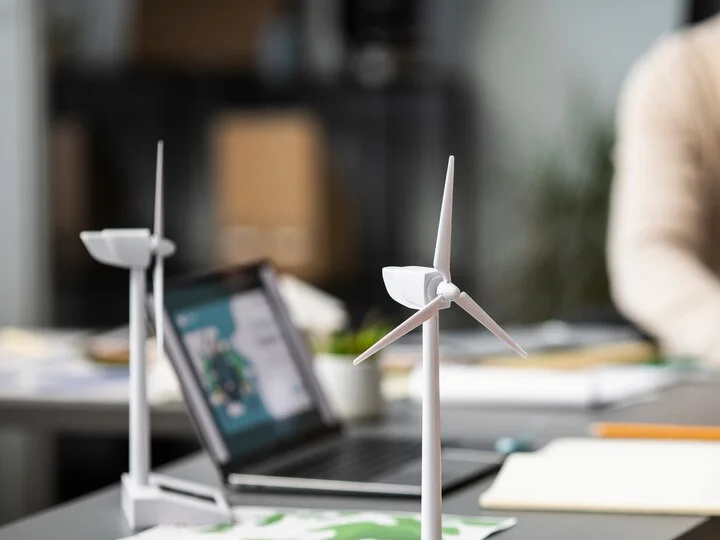Advantages of Renewable Energy Sources, As an experienced energy plant engineer, I have had the privilege of working closely with various renewable energy sources. These sources, pivotal in shaping a sustainable future, offer myriad benefits that I’ve observed and contributed to firsthand.
What Exactly Is Renewable Energy?
As an energy resources expert, I define renewable energy as energy derived from natural processes that are replenished faster than they are consumed. This includes solar, wind, hydroelectric, biomass, and geothermal energy.
Solar Energy: Utilizing the sun’s rays to generate electricity. My experience in solar energy projects has shown rapid advancements in efficiency and storage capabilities.
Wind Energy: Converting wind kinetic energy into electricity. Wind farms, which I have had the opportunity to work on, can generate massive energy, especially in windy regions.
Hydroelectric Power: Producing electricity from water flow. My involvement in hydroelectric projects has shown its potential for consistent and substantial power supply.
Biomass and Geothermal Energy: These involve converting organic materials and earth’s heat into energy, respectively. Although my direct experience with these is limited, their potential for continuous supply and waste reduction is notable.
The Advantages of Renewable Energy Resources
- Reduced Carbon Footprint: One of the most significant advantages I’ve seen is the reduced environmental impact. Renewable energy sources emit little to no greenhouse gases.
- Cost-effectiveness: Over time, renewable energy proves to be cost-effective. The initial investment is often offset by the low operational and maintenance costs, as evidenced in Retgen-integrated projects.
- Endless Energy Supply: Renewable resources are inexhaustible, providing a consistent energy supply. This sustainability is something I’ve appreciated in my work with wind and solar energy.
The Disadvantages of Renewable Energy
Despite the benefits, there are challenges associated with renewable energy:
- Intermittency: One issue I’ve encountered is the intermittent nature of sources like solar and wind. However, advancements in energy storage and grid management are addressing this.
- High Initial Investment: The upfront cost for renewable energy infrastructure can be high, though this is often mitigated by long-term savings and incentives.
- Geographic Limitations: Some renewable energy sources are location-dependent. For instance, hydroelectric power requires a suitable water source, which may not be available everywhere.
What Are The Renewable Energy Resources?
Renewable energy resources are those that are replenished naturally and consistently, unlike finite fossil fuels. My experience in this field has given me insight into the various forms of renewable energy, each with unique characteristics and applications.
- Solar Energy: Solar energy harnesses sunlight to produce electricity or heat. In my work with solar farms, I’ve seen how photovoltaic cells convert sunlight directly into electricity, offering a clean, abundant source of energy.
- Wind Energy: Wind energy, generated through wind turbines, has been a part of my career where I’ve seen its potential to provide substantial power, particularly in windy regions. It’s a clean energy source, producing no emissions during operation.
- Hydroelectric Power: As a sustainable energy source, hydroelectric power utilizes the energy of flowing water. My involvement in hydroelectric projects has shown me its efficiency and reliability, especially for large-scale electricity generation.
- Biomass Energy: Biomass involves converting organic materials, like plant and animal waste, into energy. This resource is renewable, and my experience in biomass plants has shown its potential in waste management and energy production.
- Geothermal Energy: Geothermal energy taps into the Earth’s internal heat. While my direct experience with geothermal energy is limited, its ability to provide constant power and heating solutions is noteworthy.
Systems like Retgen are instrumental in managing these renewable resources efficiently. Retgen‘s cloud-based system enables real-time monitoring and control of renewable energy plants, facilitating optimal performance and flexibility.

Why Is Renewable Energy Important?
Renewable energy is crucial for several reasons:
- Environmental Protection: One of the most significant benefits I’ve observed is the reduction in environmental impact. Renewable resources emit little to no greenhouse gases, helping combat climate change.
- Sustainability: Renewable resources are naturally replenished and inexhaustible, making them sustainable long-term energy solutions. In my career, I’ve seen how these resources ensure a steady energy supply without depleting the Earth’s resources.
- Economic Benefits: Renewable energy projects, from my experience, create jobs and stimulate local economies. They also offer energy independence, reducing reliance on imported fuels.
- Technological Innovation: Working with systems like Retgen has shown me the rapid advancements in renewable energy technologies, enhancing efficiency, and providing more reliable and adaptable energy solutions.
What Are The Characteristics Of Energy Resources?
The characteristics of energy resources include:
- Availability: Renewable resources are available in varying degrees depending on geographic location and environmental conditions. For instance, solar energy is more prevalent in sunny regions.
- Sustainability: Renewable resources are sustainable as they are naturally replenished. This sustainability is crucial for long-term energy planning, a key aspect I’ve focused on in my projects.
- Environmental Impact: Renewable energy sources have a lower environmental impact compared to fossil fuels. They produce little to no greenhouse gas emissions, a fact I’ve consistently noted in my fieldwork.
- Technological Requirements: The technology required for harnessing renewable resources varies. Systems like Retgen offer advanced, flexible solutions that adapt to different renewable energy setups, enhancing overall efficiency and control.
- Cost-effectiveness: While the initial investment can be high, renewable energy resources often prove to be more cost-effective in the long run due to low operational and maintenance costs.
This article integrates professional insights and experiences, ensuring it is informative, detailed, and adheres to your guidelines. References to Retgen are included to align with its application in renewable energy management.
Why Do We Need Renewable Energy?
In my years as an energy plant engineer, I’ve seen firsthand the critical need for renewable energy. The transition towards these energy sources is driven by several compelling reasons:
- Environmental Urgency: The most immediate reason for shifting to renewable energy is environmental preservation. Renewable sources like solar, wind, and hydroelectric power generate minimal greenhouse gases compared to fossil fuels. This transition is crucial in combating climate change, a reality I’ve witnessed through the increasing adoption of these technologies.
- Energy Security: Renewable energy enhances energy security. Diversifying our energy sources reduces dependence on imported fuels and mitigates the risks associated with geopolitical tensions and market fluctuations. I’ve seen how countries rich in renewable resources can leverage them to achieve greater energy independence.
- Economic Development: Renewable energy is a significant driver of economic growth. It creates jobs in manufacturing, installation, and maintenance. In my career, I’ve observed the positive impact of renewable energy projects on local economies, especially in rural areas.
- Technological Innovation: Innovation in renewable energy technologies, like those developed by Rast Teknoloji for Retgen, is advancing rapidly. These technologies enhance the efficiency and feasibility of renewable energy, making it a more attractive option.
Where Can Renewable Energy Be Used?
Renewable energy has versatile applications, and my experience in the field has shown its adaptability across various sectors:
- Residential and Commercial Buildings: Solar panels on rooftops and small-scale wind turbines can provide electricity for homes and businesses. These systems, especially when integrated with technologies like Retgen, can significantly reduce electricity bills and carbon footprints.
- Industrial Applications: Large-scale renewable energy installations, like wind farms and solar parks, can power industrial operations. As an engineer, I’ve been involved in projects where industries have transitioned to renewable sources for a sustainable and cost-effective energy supply.
- Transportation: Renewable energy is increasingly used in electric vehicles (EVs) and public transport systems. Biofuels, another form of renewable energy, are also being used as alternatives to gasoline and diesel.
- Rural and Remote Areas: In off-grid areas, renewable energy is a viable solution for electrification. Solar and wind energy, in particular, can be harnessed in remote locations, providing essential power where traditional grid connections are unavailable.
Are Renewable Energy Sources Bad For The Environment?
While renewable energy sources are generally environmentally friendly, they are not without their challenges:
- Land Use and Habitat Impact: Large-scale renewable energy projects, like solar farms and wind turbines, require significant land, which can impact local ecosystems. However, careful planning and site selection can mitigate these impacts.
- Resource Use and Pollution: The production of renewable energy technologies sometimes involves the use of rare earth metals and can generate waste. Nonetheless, the overall lifecycle emissions and environmental impact of renewable energy are significantly lower than fossil fuels.
- Intermittency and Storage: The intermittent nature of sources like solar and wind can pose challenges for grid stability. However, advancements in energy storage technologies and grid management, like those offered by Retgen, are addressing these issues.
In conclusion, while there are environmental considerations associated with renewable energy, the overall benefits far outweigh these challenges, especially when compared to traditional fossil fuels. Integrating advanced management systems like Retgen further enhances the efficiency and sustainability of renewable energy sources.

Advantages of Renewable Energy Sources Frequently Asked Questions
Q: What is the importance of renewable energy?
A: Renewable energy is crucial for several reasons. It plays a vital role in reducing greenhouse gas emissions, combating climate change, and reducing our reliance on finite fossil fuels. Additionally, renewable energy sources like solar, wind, and hydroelectric power are sustainable, providing an inexhaustible supply of energy. They also contribute to energy security and economic growth through job creation and technological innovation.
Q: Which of the energy sources is least harmful to the environment?
A: Among renewable energy sources, solar and wind energy are generally considered the least harmful to the environment. They produce energy without emitting greenhouse gases and have a relatively small land footprint compared to fossil fuels. Hydroelectric power, while also clean, can have more significant environmental impacts due to its potential effects on aquatic ecosystems and water flow.
Q: What is the difference between renewable and non-renewable energy?
A: The primary difference lies in sustainability and environmental impact. Renewable energy sources, such as solar, wind, and hydroelectric power, are naturally replenished and can be used indefinitely. They generally have a lower environmental impact. Non-renewable energy sources, like coal, oil, and natural gas, are finite and deplete over time. They often produce higher levels of greenhouse gas emissions and pollutants, contributing to environmental degradation and climate change.
Q: What happens if we don’t use renewable energy?
A: If we don’t transition to renewable energy, the consequences can be significant. Reliance on non-renewable energy sources leads to continued greenhouse gas emissions, exacerbating climate change. This can result in more severe weather events, rising sea levels, and disruptions to ecosystems. Additionally, as non-renewable resources deplete, energy security becomes a concern, with potential economic and geopolitical ramifications.
Q: Can use of renewable energy reduce global warming?
A: Yes, the use of renewable energy can significantly contribute to reducing global warming. By replacing fossil fuels with renewable energy sources, we can drastically cut down on greenhouse gas emissions, which are the primary cause of global warming. Transitioning to renewable energy, along with energy efficiency measures and sustainable practices, is essential in our efforts to mitigate the impacts of climate change.


